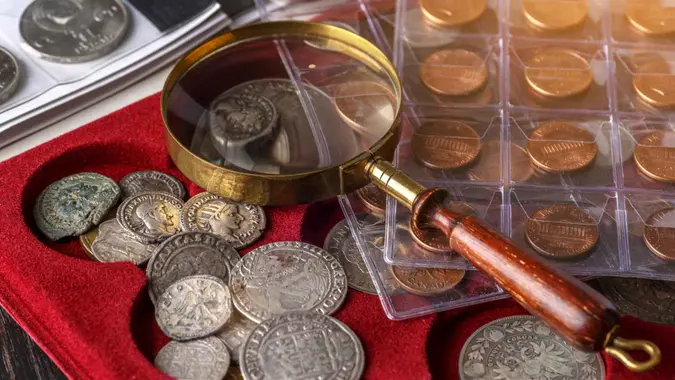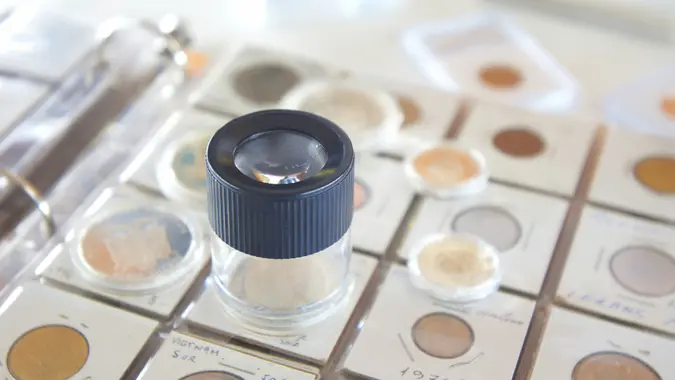Are Luxury Watches Like Rolex Losing Their Value?

Commitment to Our Readers
GOBankingRates' editorial team is committed to bringing you unbiased reviews and information. We use data-driven methodologies to evaluate financial products and services - our reviews and ratings are not influenced by advertisers. You can read more about our editorial guidelines and our products and services review methodology.

20 Years
Helping You Live Richer

Reviewed
by Experts

Trusted by
Millions of Readers
Luxury watch brands like Rolex have become synonymous with great wealth and elite status. The Geneva, Switzerland company has been in business since 1905 and produces between 80,000 and one million Swiss timepieces per year. For many years, their watches have been generally considered good investments because they appreciate over time and are always in demand, but is that still the case?
Yes, most luxury watches, like Rolex, have been losing value since their 2022 peak in the secondary market. The economic uncertainty of 2025 and the exorbitant price ranges of the highly coveted watches has seemingly made time stop for watch enthusiasts. So, in this changing climate filled with shifting consumer behaviors, many in the watch industry and beyond are asking: Is a Rolex still worth buying?
Quick Take: Just How Much Is a Rolex Watch?
On average, you can expect a Rolex watch to cost anywhere between $5,500 and $75,000. Mind you, the sky’s the limit when it comes to these luxurious timepieces. Here are a few eye-popping examples of some of the most expensive luxury watches from Rolex and more:
- Rolex ‘Paul Newman’ Daytona: Sold at a 2017 auction for $17.8 million
- Patek Philippe Grandmaster: $31.19 Million
- Rolex GMT-Master II ‘Ice’: $475,000
- Cartier Tank Française Watch: $379,500
- Heuer Monaco Watch Worn by Steve McQueen: $500,000 to $1 Million
These are extreme examples, so keep in mind that the degree of loss in value for more common models varies significantly by brand and model. While some higher-end models have seen a significant price drop from their peak, popular stainless steel Rolex models like the Rolex Submariner and Daytona, especially vintage ones, can still hold their value well or even appreciate over the long term, while others may only experience minor depreciation.
The Historical Strength of a Rolex Watch Investment
For decades, Rolex has enjoyed a reputation for not only retaining value but often appreciating in it, especially in the case of rare or limited-edition models. Buyers viewed Rolex timepieces as heirlooms, safe-haven assets and status symbols.
Demand far outpaced supply over the years, pushing resale prices above retail for many models like the Submariner, Daytona and GMT-Master II.
Market Corrections No Longer Have Time for Expensive Watches
Between 2020 and 2022, the value of pre-owned Rolex watches surged. Pandemic-fueled savings, stimulus checks, supply chain disruptions and increased interest in alternative investments led to skyrocketing prices for seemingly bored consumers looking to flex their finances from the wrist down. Some Rolex models were selling for double or even triple their original retail prices on the secondary market, which also doesn’t help the value of luxury watches today.
The market has cooled significantly over the last few years. According to data from watch market trackers like Chrono24, many Rolex models have seen a 20% to 30% drop in resale value compared to their pandemic-era highs. The once overheated market has undergone a correction, bringing prices closer to historical norms.
This decline has caused some observers to suggest that Rolex watches, or luxury watches at large, may be losing their shine as an investment.
What’s Really Happening To Luxury Watches?
Rather than a collapse in value, the luxury watch market is normalizing after an unsustainable boom. Most Rolex models still retain strong resale value compared to their retail price, and demand continues to outstrip supply for certain models. What has changed is the speculative frenzy around flipping watches for quick profit.
Several factors are influencing this recalibration:
- Rising interest rates and inflation have made cash more valuable and speculative assets less appealing.
- Luxury brands like Rolex have increased production to meet demand, easing the scarcity that once drove premiums.
- Global uncertainty has caused some buyers to be more cautious with discretionary spending.
- The rise of the secondary watch market means more data, price transparency and less room for inflated markups.
What Makes Rolex Better Than Other Watches?
There is no shortage of high-end watch brands out there, which prompts the question of why Rolex? What makes Rolex better than any of its competitors?
Though the true answer to this question is entirely subjective, here are some of the reasons that people favor Rolex:
- All of the Rolex models are waterproof, durable and efficient
- The designs are impeccably sleek and highly detailed
- They’re available in a variety of shades including white gold, yellow gold, rose gold and silver.
Final Take: Is It Worth It To Buy a Rolex?
If you’re buying a Rolex to wear and enjoy, its value proposition remains strong. If you can spare as little as $5,500 or as much as $75,000, buying a new Rolex watch is definitely worth it. Their watches are built to last, maintain brand prestige and offer exceptional quality. Better yet, many models continue to sell at or above their retail value on the secondary market. They are, pardon the pun, timeless.
However, if you’re buying purely as a short-term investment or hoping to flip a new watch for quick profit, the landscape has become much more challenging.
More From GOBankingRates
 Written by
Written by  Edited by
Edited by 

























